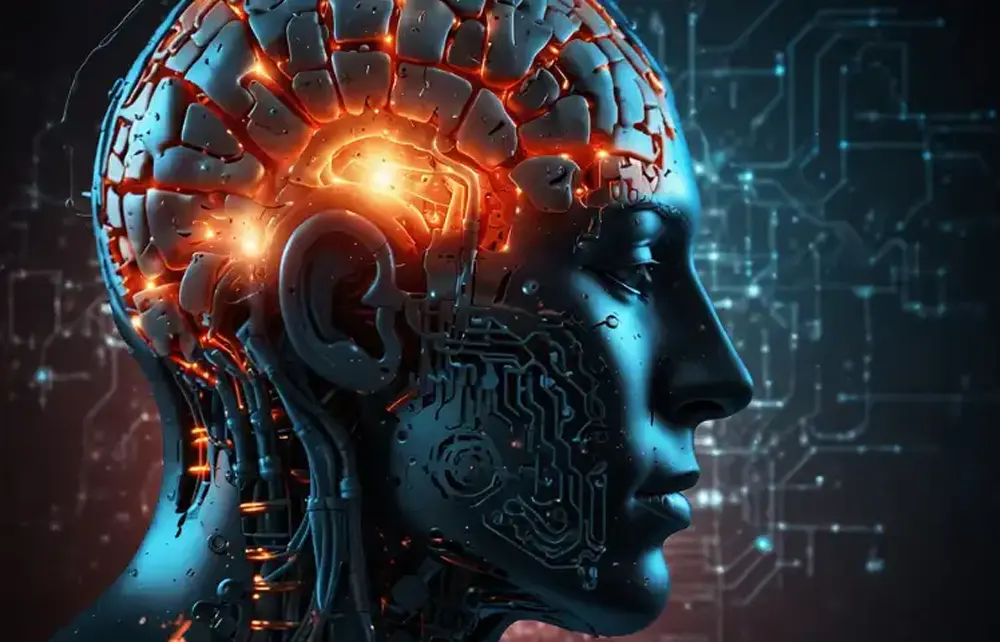Introduction
The race for Artificial General Intelligence (AGI) has become one of the United States’ most defining technological pursuits. With innovation hubs throughout Silicon Valley, Boston, New York, and Washington D.C., the U.S. leads global discussions on human-level intelligence in machines. As researchers push toward AGI, a fascinating debate has emerged:
Is simulating a digital mouse brain an essential stepping stone?
This question forms the foundation of the focus keyword:
“The Bridge to AGI: Is the Digital Mouse Brain a Necessary Stepping Stone to General Artificial Intelligence?”
This article explores U.S. scientific perspectives, biological simulations, machine-learning innovations, ethical implications, and whether a digital mouse brain truly bridges the path to AGI.
Understanding AGI and Its Foundational Concepts
Defining Artificial General Intelligence in Modern AI Research
AGI refers to a machine’s ability to perform any intellectual task a human can do, including reasoning, learning from small data, and adapting in unpredictable environments.
American research centers such as Stanford University and MIT frequently publish foundational work on AGI strategies, architectures, and emergent intelligence.
Where narrow AI handles one task at a time, AGI aims for broad, human-like cognition.
Key Characteristics of AGI: Reasoning, Adaptability, and Learning
AGI must demonstrate:
- Abstract reasoning in unfamiliar contexts
- Adaptability similar to human cognitive flexibility
- Continuous learning, not just training-phase learning
- Transferability, using knowledge across multiple domains
These attributes form the backbone of nearly all major U.S.-based AGI research.

The Digital Mouse Brain: What Scientists Are Trying to Achieve
Mapping Biological Neural Networks into Digital Systems
Digitizing a mouse brain means modeling its neurons, pathways, chemical signals, and emergent behaviors inside a computer system. U.S. data-heavy institutions like the Allen Institute for Brain Science contribute massive neuron-mapping datasets to help reconstruct these biological circuits.
Why the Mouse Brain Is a Practical Starting Point
The mouse brain is:
- Small enough to simulate
- Complex enough to model meaningful intelligence
- Scientifically documented, especially in U.S. neuroscience
With roughly 70 million neurons, mouse brains serve as a manageable mid-point between simpler organisms and humans.
Historical Efforts to Digitize Biological Intelligence
Notable Brain Simulation Projects and Their Outcomes
Major projects, such as the Blue Brain Project and U.S.-supported brain initiatives, attempted to replicate neurons with biological accuracy. Although full replication remains far away, these projects revealed how incredibly complex even simple brains are.
Lessons Learned from Previous Digital Brain Initiatives
Key U.S. research takeaways:
- Brains use electrochemical networks, not just electrical signals
- Neural circuits rely heavily on plasticity, still difficult to model digitally
- Biological intelligence involves energy-efficient, dynamic processing
Organizations like the National Institutes of Health continue to examine these complexities.
Is the Digital Mouse Brain Truly a Stepping Stone to AGI?
Arguments For Biological-Inspired Progression Toward AGI
Supporters say:
- Biological brains already solved intelligence—why reinvent the wheel?
- Mouse simulations help us see how emergent cognition happens.
- U.S. labs produce high-resolution data that benefits AGI development.
This perspective is common among American neuroscientists and hybrid-model researchers.
Arguments Against Needing Biological Replication
Opponents—often from Silicon Valley’s engineering-heavy AGI community—argue:
- AGI may not need biological accuracy.
- Machine architectures can surpass nature in scaling and speed.
- Modern multimodal models developed in the U.S. progress without simulating entire brains.
Evaluating Current Evidence in AI and Neuroscience
A balanced view suggests the digital mouse brain is helpful but not mandatory.
It expands scientific knowledge, but AGI may arise from other American-led innovations like transformer models, neuromorphic chips, or hybrid systems.
Comparing Biological Intelligence and Machine Intelligence
Differences in Learning Structures and Adaptation
Mouse brains learn through biochemical adaptation, while U.S. machine-learning models rely on mathematical optimization.
Key differences:
- Humans and mice use synaptic plasticity
- Machine systems use gradient descent
- Biological brains adapt with extremely low energy consumption
Computational Efficiency: Brain vs. Digital Systems
The mouse brain operates on just 1 watt, while U.S. AGI-scale models require massive datacenter power.
Understanding this efficiency gap motivates U.S. researchers to explore neuromorphic computing.

Ethical and Philosophical Implications
Should Digital Replication of Brains Be Pursued?
U.S. ethics boards and academic councils debate:
- Does simulating a brain create a morally relevant entity?
- Should digital experiments mimic suffering or pain responses?
- Does biological replication pose existential risks?
The Moral Status of Simulated Conscious Systems
If a simulation approaches consciousness, American institutions like Carnegie Mellon University explore questions of rights, freedom, and moral standing for synthetic organisms.
Technical Challenges in Building a Digital Mouse Brain
Data Collection Limitations and Neural Mapping Difficulties
Even with advanced tools, U.S. mapping technologies struggle with:
- nanoscale precision,
- signal-path complexity,
- and chemical processing simulation.
Replicating Emergent Behavior in Artificial Systems
Emergence—intelligence arising from countless simple interactions—is one of the biggest challenges for U.S. AGI researchers.
Digital replication of biological emergence remains unfinished work.
The Future of AGI: Biological Inspiration or Pure Machine Innovation?
Hybrid Models Combining Neuroscience and AI Engineering
Some U.S. researchers lean toward integrated designs combining:
- neuroscience findings,
- computational efficiency,
- and machine-learning scalability.
Hybrid AGI models may offer the best of both worlds.
Potential Technological Breakthroughs in the Next Decade
Breakthroughs could come from:
- U.S. neuromorphic chips
- American quantum computing labs
- Federally funded advanced computing initiatives
- Cognitive-systems engineering in major U.S. tech companies
Great summaries of these trends are found at the National Science Foundation.

FAQs About The Digital Mouse Brain and AGI Research
1. Is the digital mouse brain project happening in the USA?
Yes. U.S. neuroscience centers heavily invest in brain-mapping and digital reconstruction.
2. Will simulating a mouse brain directly lead to AGI?
Not directly, but the insights can accelerate AGI development.
3. Do U.S. tech companies support biology-inspired AGI?
Some support it, but many focus on machine-first architectures.
4. Is brain simulation more advanced in the U.S. than in other countries?
The U.S. leads in funding, data collection, and computational resources.
5. Does the mouse brain help explain consciousness?
It offers foundational clues, though consciousness research is far more complex.
6. How large is the AGI research ecosystem in the USA?
Extensive—spanning universities, private companies, federal programs, and independent labs.
Where Does the Digital Mouse Brain Fit in the Journey to AGI?
So, is the digital mouse brain a necessary stepping stone to AGI?
The best answer: It’s extremely valuable—but not required.
Simulating biological intelligence offers deep insights.
But U.S. AI innovation may reach AGI through entirely different paths.
Still, as long as U.S. research institutes keep pushing both biological and computational boundaries, the digital mouse brain will remain a fascinating and influential stepping stone on the journey toward true general artificial intelligence.
#AGI #DigitalBrain #MouseBrainModel #AIResearchUSA #Neuroscience #ArtificialIntelligence #BrainSimulation #FutureOfAI #AGIInnovation #TechResearchUSA


